October 19 - 25, 2014: Issue 185
Crime, Punishment and Redemption - A Convict's Story
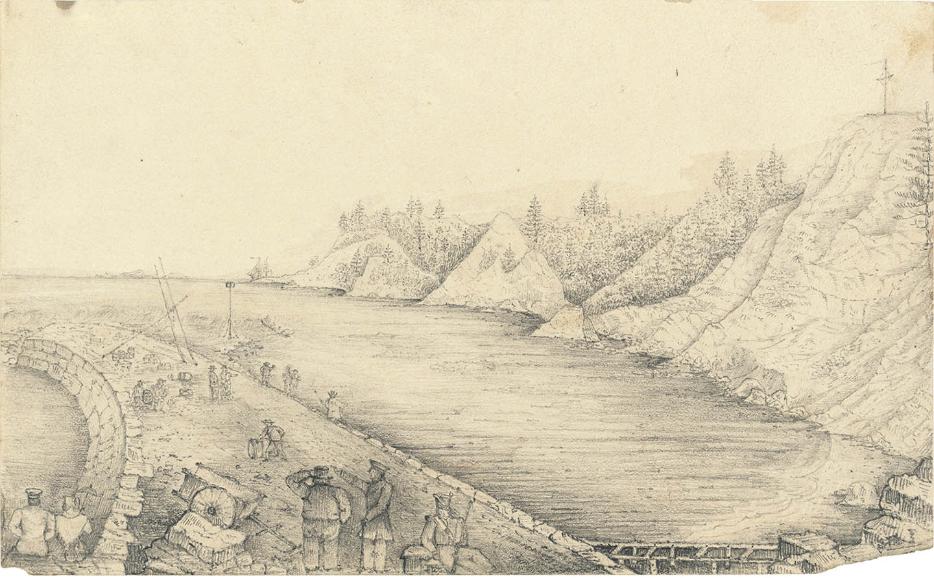
Reverend Thomas Beagley Naylor's sketch of the Landing Place at Kingston, Norfolk Island - circa 1842 - nla pic9224315
Crime, Punishment and Redemption - A Convict's Story by Dr. June Slee
Dr June Slee is arriving from New Zealand on Monday October 20th for the launch on Thursday 23rd of her book, Crime, Punishment and Redemption - A Convict's Story, at the National Library of Australia in Canberra.
Dr Slee is an experienced writer and researcher, lecturer and practitioner in the field of criminology, particularly relating to the Australian convict era. While researching her doctorate in 1990 on the transportation of young male convicts to Point Piper in Van Diemen's Land under Dr. Alexander Nisbet at the Australian National Maritime Museum's Vaughan Evans Library, June Slee was handed a folder of typewritten pages entitled Manuscript Diary by John Ward CONVICT.
In February 2012 the National Library of Australia made available a digitised online file of the whole of this diary, making accessible a journal written from the viewpoint of an eloquent writer on the experience of being a convict.
We continue to emphasise the value of the online format for creating and storing records of any size, or for accessing works you may no longer physically handle due to their priceless qualities. This new book from the National Library of Australia's publishing section highlights what is dynamic in both the printed and digitised and where they support each other - in being able to access the unedited records and read 'voices' from the past to make up our own minds about what they are saying and why - that can lead to having a hard copy version permanently accessible - as a book in the hand - or a file a few clicks away from your fingertips that inspires you to 'surf the web' to find out more.
June Slee's work, Crime, Punishment and Redemption: A Convict’s Story, in some ways celebrates this democratisation of media as it examines words from the diary of a man transported to Australia and in existing at all, proves that even during our formative decades, there were some who had something to say outside of what was published as platitudes for those in charge and that they were able to say it, or, as John Ward states in his opening premise for making this record; "I for a number of years purposed to myself to keep a Diary to record passing events as they happen to myself and others; reflections and observations that may prove of service to those that may come after me..."
Readers remind us each week they enjoy our focus on everything Australian, that we are now all hungrier for stories about those who came before us and where their threads are enthreaded with our own. Crime, Punishment and Redemption: A Convict’s Story brings to light such a record and presents superlative accessible insights on the characters and character of life through John Ward's words. It too is one of our stories, replete with Ward's 'voice' ; so much so that you may glimmer him out the corner of your eye.
Once a groom to an officer and gentleman, John Ward was arrested for criminal activities in February 1838 and sentenced to ten years transportation to Australia. After spending 19 months aboard a prison hulk he was transported late in 1839, arriving to be among shifts in the British penal system, namely being transported at the time when New South Wales would no longer accept convicts. He was subsequently sent to Norfolk Island where another shift in penal policy was occurring - the innovatory and humane experiment of Captain Alexander Maconochie's 'marks' system.
Filled with background knowledge on everything from convict marriages to the difference between a 'ticket of leave' and a 'certificate of freedom', illuminated by drawings and photographs which lend further insight into the diary of John Ward, this new book by Dr. Slee extends our understanding by bringing to life the era and shifts occurring in Australia's penal process through the words of one who was there. It belongs in the possession of all interested in our history, whatever their age, and is a work for those who love art as well.
 We spoke this week with Dr. Slee on some of the aspects of Crime, Punishment and Redemption: A Convict’s Story:
We spoke this week with Dr. Slee on some of the aspects of Crime, Punishment and Redemption: A Convict’s Story:
Crime, Punishment and Redemption: A Convict’s Story, parallels shifts in the way convicts were to be treated in order to reform them on Norfolk Island (Naylor’s evangelistic approach and Maconochie’s Associationism) - what in Ward’s diary best illustrates his awareness of this, when he is strolling through (p.138) the gardens initiated by Maconochie or Reverend Naylor's evangelism, or was his more a personal shift?
By the time John Ward arrived in Norfolk Island, having spent 19 months on the hulk, York, and separated from the love of his life, Rose, he was a destroyed man. When he left England on the convict ship he wrote there had been “no intelligence of Rose; not a sentence word or letter respecting her; I was in a frame of mind easier to be imagined than described.”
He had probably lost all hope of ever seeing or hearing from her again when he reached Norfolk Island. However in June 1841, more than twelve months after he had disembarked, he had an letter from her enclosed with a letter sent by his parents. It was at this stage, his reformation began. His depression lifted having heard from Rose – he tells us she signed her letter “Yours till Death” R.L. and
“From this time I began to recover from my sickness: and got stronger and better in health every day, and all seemed to go on “smoothly.” He continued “But there was something else to be done – I began a course of reading my Bible, which was pointed out to me in my parents letters, as the only standard for you to build upon, and which I had been taught from my youth up; but by me long neglected.”
I believe this is when his gradual reform through salvation began, and was, based on personal reasons, to answer your question. I believe at that early stage on his path to reform, Ward was seeking to re-establish his relationship with his parents, rather than his religion, as through them he would have a conduit to Rose, as the enclosed letter had demonstrated.
You ask about Evangelism and Associationism. I think that in practice there was little difference between these approaches on Norfolk Island. They both involved suffering, punishment and salvation.
Crime, Punishment and Redemption: A Convict’s story, reunites excellent examples of images to illustrate the chronological events; could you please share with us two examples of these that are your favourites to epitomise his experience and tell us why they are your favourites?
My favourite images are two pencil drawings by the Reverend Thomas Beagley Naylor. The first is of the Landing Place at Kingston, Norfolk Island, (p.128 - see above) and the second; that of his own garden (p.138).
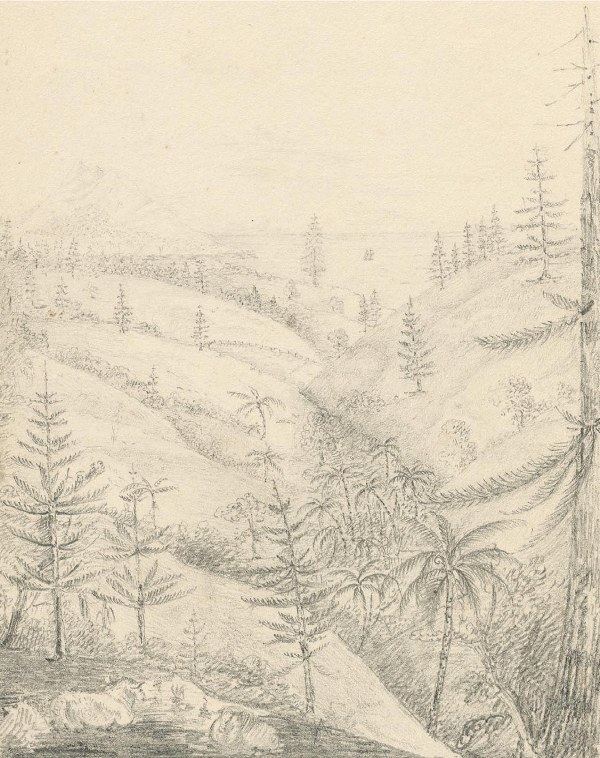
The Valley of Ferns (Chaplains Garden) Norfolk Island, 10 Jan., 1842 - nlapic9224326
They were produced during Ward’s time at the penal settlement, and epitomise so much about that place at that time. Take the sketch of the landing place. I have spent many hours at this wharf, wondering how the convicts felt as they were carried to it in small boats from the convict ship anchored beyond the reef. The high cliffs, the narrow strait between the reef and rocky shore, the unpredictable tide surges; all of these define Norfolk Island as it was known colloquially, as the 'Botany Bay of Botany Bay'. Note the detail. There is obviously a ship in the distance. Is it arriving, or leaving, or passing by – knowing that unless you had government permission you were not allowed to land on Norfolk Island, the ultra-penal settlement. What are the men saying as they gaze into the distance?
Like all great records of histories, Crime, Punishment and Redemption – A Convict’s Story creates as many questions as it does provide answers; is there an area for future research John Ward's diary has interested you in?
I have already begun researching Alexander Maconochie’s life. Not so much about his penal reform experiments, but his personal life.
For every reader there is an opportunity to further understand and even immerse themselves through the language used by Ward, typical of his time and place - even his poems allow intimacy with his voice to be communicated; did you find this transported your own self and sensibilities closer to what he may have been experiencing and make it come to life more?
Certainly; I think his capacity to describe his past behaviour with clarity and honesty and reflect on it almost objectively, is peerless. There are many examples in the book, but let me share the following. Ward has fallen out with his parents over their refusal to allow him to see Rose, and he has returned to his ‘old companions of whoredom and drunkenness.’
He describes his state, “For often I would be in a state between drunkenness, and distraction of mind, next to madness wish for death.” In the next sentence he presents the truism: “Awful indeed the state of the heart when left to its own surmising;”
Another aspect I liked about Ward’s language was his use of what I would have thought were not common terms at that time, such as ‘greenhorn’ and ‘three sheets in the wind’.
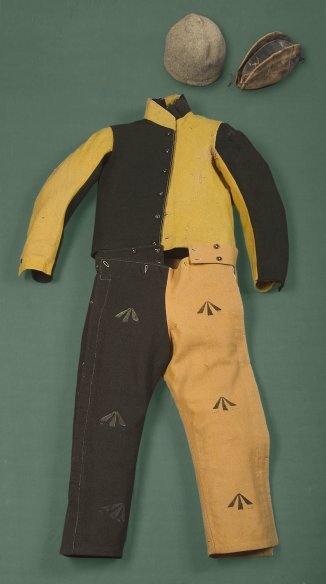 Crime, Punishment and Redemption: A Convict’s Story, as with all journals, goes further than being a mere record of John Ward’s diary; through your accompanying insights on surrounding conditions and events, such disease, or what convicts experienced prior to transportation, the book gives a whole picture John Ward’s caution in writing a record avoids. What was the most enjoyable part of putting together such an excellent record?
Crime, Punishment and Redemption: A Convict’s Story, as with all journals, goes further than being a mere record of John Ward’s diary; through your accompanying insights on surrounding conditions and events, such disease, or what convicts experienced prior to transportation, the book gives a whole picture John Ward’s caution in writing a record avoids. What was the most enjoyable part of putting together such an excellent record?
The most enjoyable part of writing my book was the opportunity it presented for learning. As you state, his diary was not a daily record of events, and I had to know the back story to so many subjects. I also enjoyed puzzling over what he did not include. While he wrote about all aspects of transportation, there were subjects he did not write about, and I am sure this was deliberate. For example he did not criticise drinking and gambling when he was referring to life on Norfolk Island – possibly because he was participating in these activities. It was intriguing working out why he chose to ignore some issues and events that he must have observed.
Right: Convict Uniform and Two Caps between 1830 and 1849 nla pic an6441518 - P. 183.
Longing fills John Ward’s diary. On being convicted and transported he is fixated on unrequited love that may never be realised and then this shifts to a longing for redemption – what key notes did your research point to as when he felt this reaching for something most keenly?
Throughout the Diary his longing focuses on Rose. I am sure he was not keen to be transported to Australia because he knew that while he stayed in England – albeit it on a hulk in Portsmouth Harbour, there was still a chance they might be reunited. As the distance between him and England grew during the voyage his longing for Rose increased dramatically, affecting his mental health. Listen to his words as they waited in Sydney Harbour, unable to go ashore because transportation to that colony had ceased during their voyage.
“We lay in the harbour for several days; it could not be determined where we was to be sent to; during that time I had leasure (sic) to have taken many observations, but I was lost to everything around me: for my distracted mind, on account of not hearing what was become of my poor Rose; now prevailed over every sense; and I observed every thing around me with a kind of stupor: lost in remorseless repining, and wrapt in sullen seriousness.”
Much later on Norfolk Island among the many religious tracts he studied, he read the Samuel Shaw’s Welcome to the Plague (1666) and redirected his longings to prepare for death with ease.
“I was struck with a force I never felt before; of my placing too much care on Rose when I may say too much, I mean it is apt to engross my mind at times and exclude higher meditation.”
These words appear on the second last page of the Diary and indicate Ward has given up his earthly passions and replaced them with spiritual longings.
Throughout Crime, Punishment and Redemption: A Convict’s Story it appears that Ward is ill would this account for some of his tone?
Certainly; I studied the effect of all stages of syphilis and of consumption on the mental state of those afflicted and concluded that the final part of the Diary is most likely rather confused because of these illnesses. I am sure his newly found acceptance of his fellow human beings is also the result of his illness. It caused him to develop humility and empathy. For example he develops a greater empathic awareness on the voyage and on Norfolk Island. I am sure this is due to the role model the surgeon-superintendent on the convict ship, Dr Alexander Nisbet provided as he skilfully saved his physical and mental health. On Norfolk Island, the Reverend Thomas Beagley Naylor also demonstrated that all men should be treated equally.
And of course, Captain Alexander Maconochie excused Ward from working because of his illness. This humanitarian approach was extremely unusual for the long periods of time Ward was ill, and no doubt restored his faith in penal authorities. Thus, his tone softened.
You have a chosen interest in researching and writing about penal reform in Australia during the convict era - what insights did you gain from Ward’s diary that were new?
Briefly, Ward’s is the unauthorised history of a critical period in British transportation to Australia. His candid descriptions of penal management vary greatly from the official versions, as you would expect them to. But Ward brings a boldness and depth that encourages me to believe his perspective rather than officialdom’s contained the thousands of documents that were produced throughout that period suffocating the truth and enormity of British transportation of its unwanted to Australia – a process which did not cease until 1967.
Crime, Punishment and Redemption - A Convict's Story by June Slee
Publisher: National Library of Australia, Edition: 1st Edition, Pages: 216, Publication Date: 01 October 2014, Price $44.99
Overview
'the love of my life'...
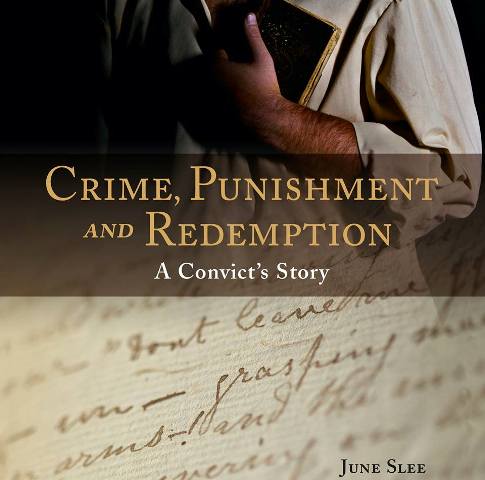 John Ward, writing whilst incarcerated on Norfolk Island, tells a story of thwarted love that–he claims–led him to a life of crime: including theft, sexual assault and more. In telling the candid story of his downfall he exposes his own ruthlessness and lack of empathy.
John Ward, writing whilst incarcerated on Norfolk Island, tells a story of thwarted love that–he claims–led him to a life of crime: including theft, sexual assault and more. In telling the candid story of his downfall he exposes his own ruthlessness and lack of empathy.
This book, using the diary as its base, is fascinating on so many levels. It is an insight into the criminal mind, ably examined by author June Slee. It is a glimpse into 19th–century aristocratic life–dress, food, pastimes and prejudices–from a servant's perspective (Ward was a groom to an officer gentleman). And it is a unique record, perhaps the only extant diary ever written during the Australian penal era whilst its convict writer was imprisoned. Plus, Ward records a particular moment in our history: not only life aboard prison hulks which he describes in detail but also the timing of his arrival in Sydney when convicts were no longer being accepted; he was sent straight to Norfolk Island where we get a fascinating insight into the rule of Captain Alexander Maconochie. Maconochie believed in a system of improvement for convicts based on a marks system for good behaviour rather than humiliating punishment. In this way, Ward gained access to writing materials for his diary.
It's all in this book: love, history, convicts, crime and criminology, Norfolk Island ...
The author weaves the diary – Ward’s own words – into her text seamlessly to tell a gripping story.
Illustrated with over 150 images including paintings, photographs, documents, newspapers and drawings, the book includes text box features that elucidate aspects of life at the time: oyster bars and eating out, disease, smuggling, county justice, convict marriage, convict class and society, the end of transportation, and more.
June Slee is an experienced writer and researcher, lecturer and practitioner in the field of criminology, particularly relating to the Australian convict era. Slee was immediately drawn to Ward’s story, not just for its insight into 19th-century crime and punishment, but also for its outstanding literary style and rarity as a diary that was written while its author was still incarcerated. Currently she is completing another book on convictism and has plans for two further books. June currently lives in New Zealand where
Purchase online at: http://bookshop.nla.gov.au/book/crime-punishment-and-redemption.do
Crime, Punishment and Redemption: A Convict’s Story
Posted October 10, 2014 - NLA Blog
Recently, the National Library of Australia published my book, Crime, Punishment and Redemption: A Convict's Story. I call it ‘my' book, but in fact it is the result of a great deal of effort and expertise from many people, both at the NLA and elsewhere; people to whom I am eternally grateful. The story is based on John Ward's convict diary written while he was imprisoned on Norfolk Island from 1840–1844. The diary is a rare treasure as few convict diaries or letters have survived and, to my knowledge, Ward's is the only existing convict diary written during the Australian penal era while its author was in prison.
John Ward's diary.
I am constantly being asked why I chose to write about John Ward, the convict ‘hero' of the story. John Ward is not an ancestor of mine, as far as I know, but, curiously, my maternal grandmother was a Ward from Kingston-on-Hull, England, John Ward's birthplace. It is assumed that my professional interest in juvenile delinquency and at-risk children led me to John Ward's diary, and in a way it did, but there was a more personal impetus.
Years ago I accompanied a friend to a genealogy centre where she was researching her family. After she had taught me the mysteries of the microfiche, I looked up my family name, ‘Slee', and to my surprise, it stretched across the centuries. One woman in particular caught my attention; Francesa Slee died in a poorhouse in the early 19th century, leaving a son, Alfred, only two days old. I was haunted by that information, and still wonder about the fate of that young child who had such a wretched start to his life.
That brief excursion into my family history motivated me to study the lives of poor, orphaned and destitute boys who at a young age drifted into crime. This eventually led to my decision to write a doctorate on juvenile penal reform based on the extraordinary behavioural interventions of Dr Alexander Nisbet (later Sir) who served as a superintendent-surgeon on convict transports from 1824 until 1840. His seventh and final voyage was aboard the Mangles in 1840, the convict ship that transported John Ward to Sydney. While researching Nisbet, I was directed to Ward's diary by a librarian at the National Maritime Library in Pyrmont, NSW; he recalled that Ward had written about Nisbet, describing him as a kind and skilled doctor to whom he owed his physical and psychological survival.
Years later, I contacted the NLA and asked if they were interested in a book based on Ward's diary as part of their publishing project on the diaries which they hold in their archives. They were, and now, four years later, the NLA has produced a very fine book—its quality and contents far beyond my dreams. So, to all those people who have helped me on this long and fascinating voyage, I say, ‘thank you'.
June Slee
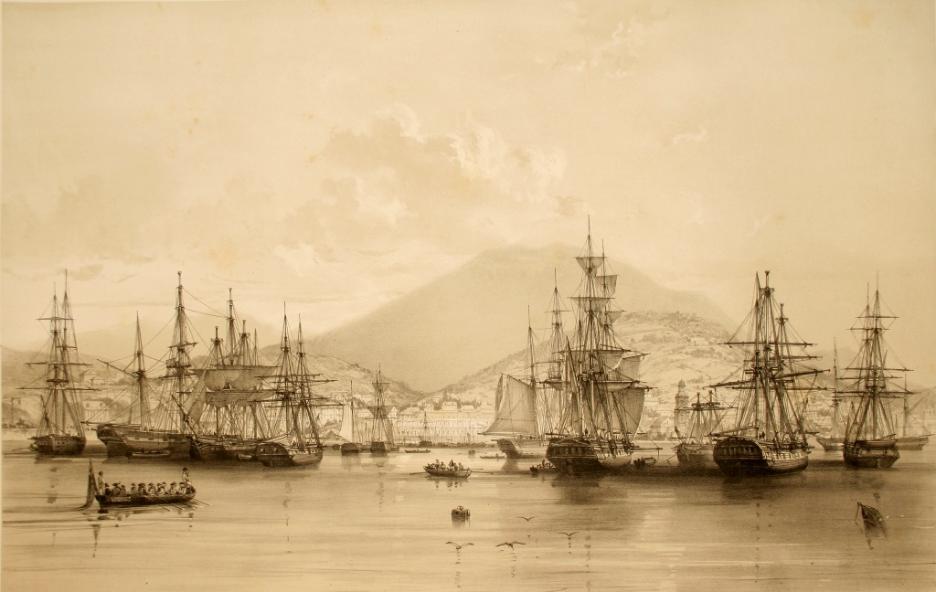
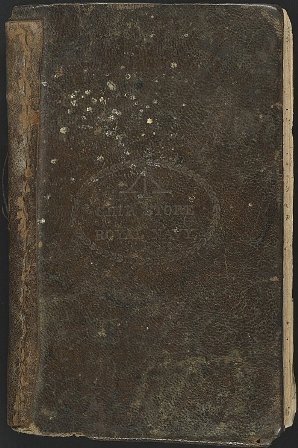 Above: Hobart-Town. Atlas pittoresque, planche 156. - 1846: Jules Dumont d'Urville (1846) Voyage au Pôle Sud et dans l'Océanie sur les corvettes L'Astrolabe et La Zélée exécuté par ordre du Roi Pendant les Années 1837–1838–1839–1840 sous le commandement de M. Dumont-d'Urville. Atlas pittoresque. [Journey to the South Pole and Oceania on the Corvettes L'Astrolabe and La Zélée to Execute the Order of the King during the Years 1837–1838–1839–1840 under the Command of Dumont d'Urville. Pictorial Atlas.], Copy from the heritage library of Gray, Haute-Saône, France.
Above: Hobart-Town. Atlas pittoresque, planche 156. - 1846: Jules Dumont d'Urville (1846) Voyage au Pôle Sud et dans l'Océanie sur les corvettes L'Astrolabe et La Zélée exécuté par ordre du Roi Pendant les Années 1837–1838–1839–1840 sous le commandement de M. Dumont-d'Urville. Atlas pittoresque. [Journey to the South Pole and Oceania on the Corvettes L'Astrolabe and La Zélée to Execute the Order of the King during the Years 1837–1838–1839–1840 under the Command of Dumont d'Urville. Pictorial Atlas.], Copy from the heritage library of Gray, Haute-Saône, France.
(1844-1848): In 1844 John Ward was moved to Van Diemen's Land Tasmania) to serve out his sentence.
_________________________
Left: Cover for: Diary of John Ward, 1841-1844, National Library of Australia, MS 3275, Ward, John, 1814-. Diary of John Ward, 1841-1844 MS 3275 comprises the manuscript diary (155 p.) kept by a convict on Norfolk Island between November 1, 1841 and April 25, 1842. Describes events leading to his conviction, his imprisonment at Portsmouth on the prison hulk "York", his shipment from England to Norfolk Island and his life there. There are loose pages at the back of the diary with entries dated from May 14, 1842 to January 21, 1844. The names George Cunningham and John Fell appear on the back endpaper. Included among the loose papers are two poems, one signed by C. Moore (1 v.).Also includes a transcript by Bryan Gandevia (100 p.) and photocopy of the transcript, and two pages photocopied from the list of male convicts by the ship "Mangles" dated 1840 (1 folder).